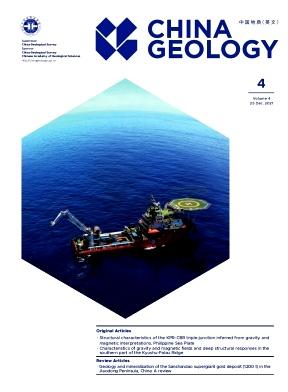Mineral component of mineralizations in different types of breast lesions and their correlation with diseases
IF 4.7
3区 地球科学
Q1 GEOSCIENCES, MULTIDISCIPLINARY
引用次数: 0
Abstract
Pathological mineralizations in breast lesions are closely associated with disease progression and serves as a critical diagnostic indicator. However, systematic understanding remains lacking regarding the phase categories, distribution patterns, and proportional occurrences of mineral phases across different breast lesion types. The diagnostic implications of specific phases, such as calcium oxalate, for distinguishing benign and malignant lesions remain controversial. This study employed polarizing microscopy, environmental scanning electron microscopy (SEM) with energy dispersive spectroscopy (EDS), transmission electron microscopy (TEM), Fourier transform infrared spectroscopy (FTIR), and Raman spectroscopy to analyze the phase composition of 61 mineralized samples from three lesion types: Invasive carcinoma, carcinoma in situ and benign lesions. Results demonstrate that breast lesion mineralizations predominantly comprise calcium phosphates, including hydroxyapatite (HA), amorphous calcium phosphate (ACP), and whitlockite, occasionally accompanied by calcium oxalate (monohydrate or dihydrate). Distinct distribution patterns and proportional occurrences of minerals were observed among the three types of lesion mineralizations. HA, as the predominant phase, was ubiquitously present across all three lesion categories. ACP, a mineralization precursor phase, emerged during early mineralization stages across all lesion types. Notably, whitlockite exclusively occurred in benign lesions and carcinoma in situ, with higher prevalence in benign cases, suggesting a progressive decline in Mg2+ concentration within the lesion microenvironment as malignancy advances. Calcium oxalate coexisted with HA in mineralized regions across all lesion types, and its presence in invasive carcinoma specimens warrants heightened clinical attention.
不同类型乳腺病变矿化的矿物成分及其与疾病的相关性
乳腺病变的病理性矿化与疾病进展密切相关,是一项重要的诊断指标。然而,对于不同乳腺病变类型中矿物相的种类、分布模式和比例分布,目前仍缺乏系统的认识。具体阶段的诊断意义,如草酸钙,以区分良性和恶性病变仍有争议。本研究采用偏光显微镜、环境扫描电镜(SEM)和能谱仪(EDS)、透射电镜(TEM)、傅里叶变换红外光谱(FTIR)和拉曼光谱分析了61份来自浸润性癌、原位癌和良性病变三种病变类型的矿化样品的物相组成。结果表明,乳腺病变矿化主要由磷酸钙组成,包括羟基磷灰石(HA)、无定形磷酸钙(ACP)和whitlockite,偶尔伴有草酸钙(一水或二水)。3种损伤矿化类型中矿物的分布规律和赋存比例各不相同。透明质酸作为主要阶段,在所有三种病变类别中普遍存在。ACP是矿化的前体相,出现于矿化早期。值得注意的是,whitlockite仅发生在良性病变和原位癌中,在良性病例中患病率更高,提示随着恶性肿瘤的进展,病变微环境中Mg2+浓度逐渐下降。草酸钙与透明质酸共存于所有病变类型的矿化区,其在浸润性癌标本中的存在值得高度关注。
本文章由计算机程序翻译,如有差异,请以英文原文为准。
求助全文
约1分钟内获得全文
求助全文

 求助内容:
求助内容: 应助结果提醒方式:
应助结果提醒方式:


